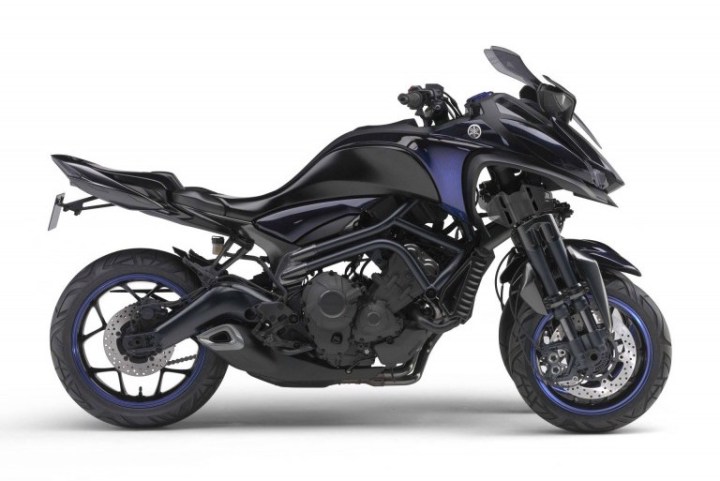
The three-wheel motorcycle category is fairly broad, in fact. Originally, there were one-wheel front, two-wheel back structures from Harley Davidson, Honda, and other manufacturers, but more recently, the two-wheel front, one-back setup has been popularized by brands like Can-Am.
There’s also a question of what is technically a motorcycle and what is an automobile. For example, is the Morgan three-wheeler a bike or a car? Sure, it has two skinny front tires and a fatter rear one, but you’re sitting down in the semblance of a cockpit and you pilot the vehicle with a steering wheel. The Polaris slingshot is much the same.

Some argue that trikes defeat the purpose of a motorcycle, which, to them, might be the enjoyment that comes from maneuvering these nimble, slender machines. However, others counter that the open-air connection to the road is not lost with the addition of a third wheel.
Whichever side of the fence you call home, Yamaha has decided it will appeal to both camps by adding a production version of its MWT-9 Concept to its lineup, according to VisorDown. First shown at last year’s Tokyo Motor Show, the MWT-9 is a unique three-wheel design that distinguishes itself from models like the Can-Am Spyder, Harley Davidson Tri-Glide, and Morgan Three-Wheeler. Using two smaller-diameter wheels up front and a standard motorcycle rear wheel, the bike looks more like a two-headed creature than anything else.
Powering the concept is the Yamaha FZ-09’s 850cc inline three-cylinder motor, which will most likely carry over to the production model. This design has been tried before in models like the Piaggio three-wheel scooter, but a full-fledged motorcycle trike has yet to be pioneered with so much displacement.
The unique styling may bridge the gap between two-wheel purists and three-wheel liberals, due to the confidence-inspiring riding style and narrow, subtle dimensions. It’s hard to get around the added weight, but with additional power and front-end grip, this trike design could introduce riding to many who never considered the activity before.


